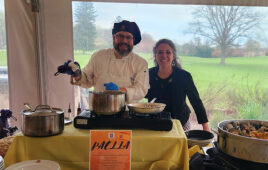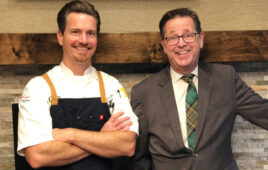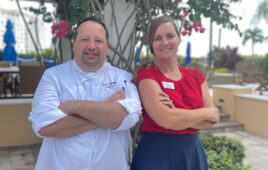The Greenbrier’s apprenticeship program—renowned as the industry’s best—links talent to opportunity.
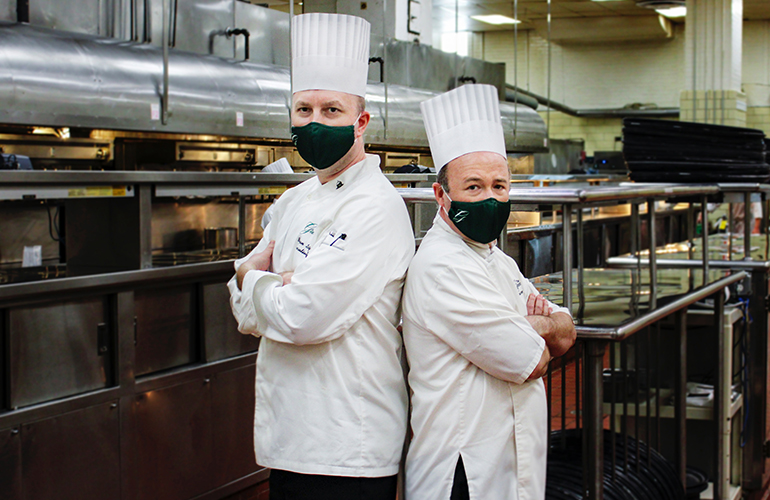
The Greenbrier’s apprenticeship program is run by Jean-Francois Suteau, Executive Pastry Chef (right), and Bryan Skelding, Executive Chef.
In the letter he penned to the 2020 graduates of The Greenbrier Culinary Apprenticeship Program, Bryan Skelding, Executive Chef of The Greenbrier (White Sulphur Springs, W.Va.), said, “Each of you are so very different, yet all have one common goal: To be remarkable cooks, chefs, and leaders in our industry.”
This has always been the guiding principle behind The Greenbrier’s program, which has turned out 351 alumni in its 64-year history.
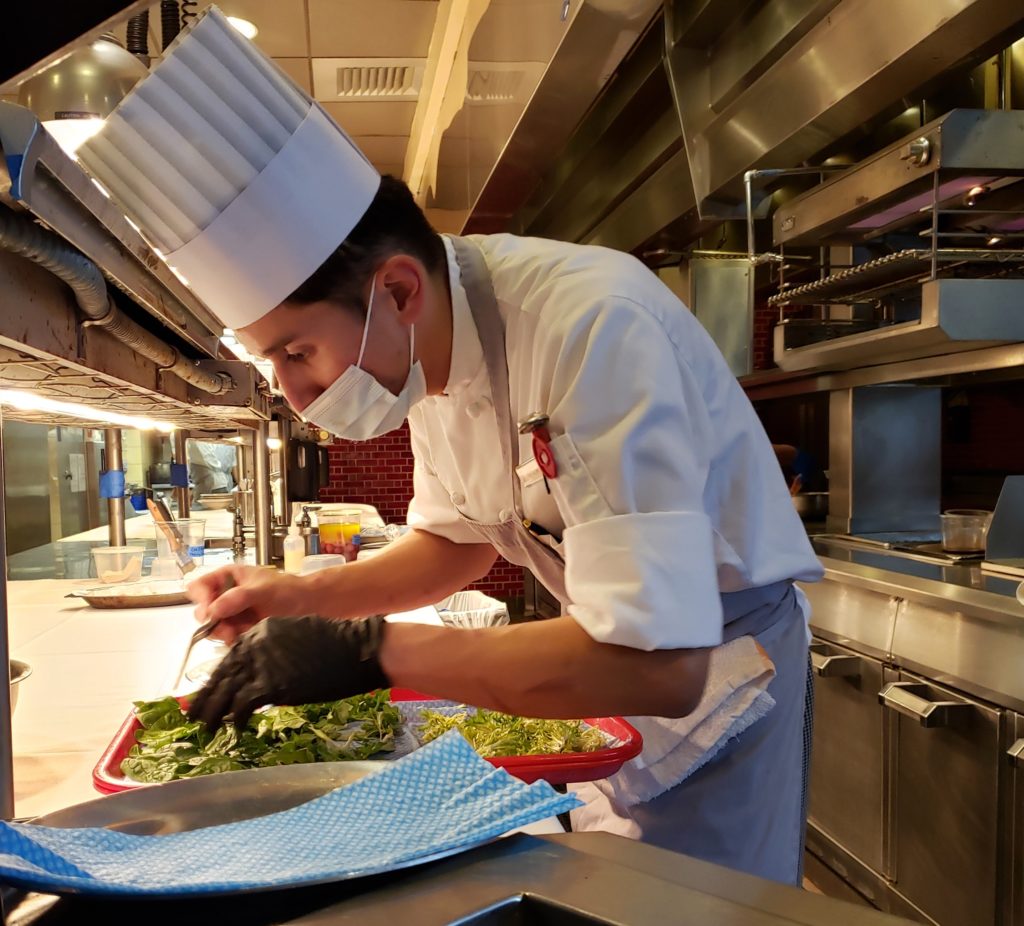
Dozens of its graduates have gone on to become some of the club industry’s most notable leaders, including Lawrence McFadden, CMC, GM/COO of The Union Club of Cleveland (Ohio); Keith Coughenour, Executive Chef of the Duquesne Club (Pittsburgh, Pa.); Michael Matarazzo, CEC, Executive Chef of Farmington Country Club (Charlottesville, Va.), and Seth Shipley, CEC, CCA, Executive Chef of Belle Meade Country Club (Nashville, Tenn.).
The Greenbrier’s program is not a culinary school, but more of a post-graduate opportunity both for savory and pastry. It offers its apprentices intense, hands-on training designed to refine and develop the skills needed to be successful. It’s meant to train and challenge—and while it certainly checks those boxes, it also opens doors that might otherwise be locked.
“This is the beginning of your career,” said Jean-Francois Suteau, Executive Pastry Chef, in his letter to the 2020 graduates. “You will be a Greenbrier Apprentice—a title you will keep for the rest of your life.”
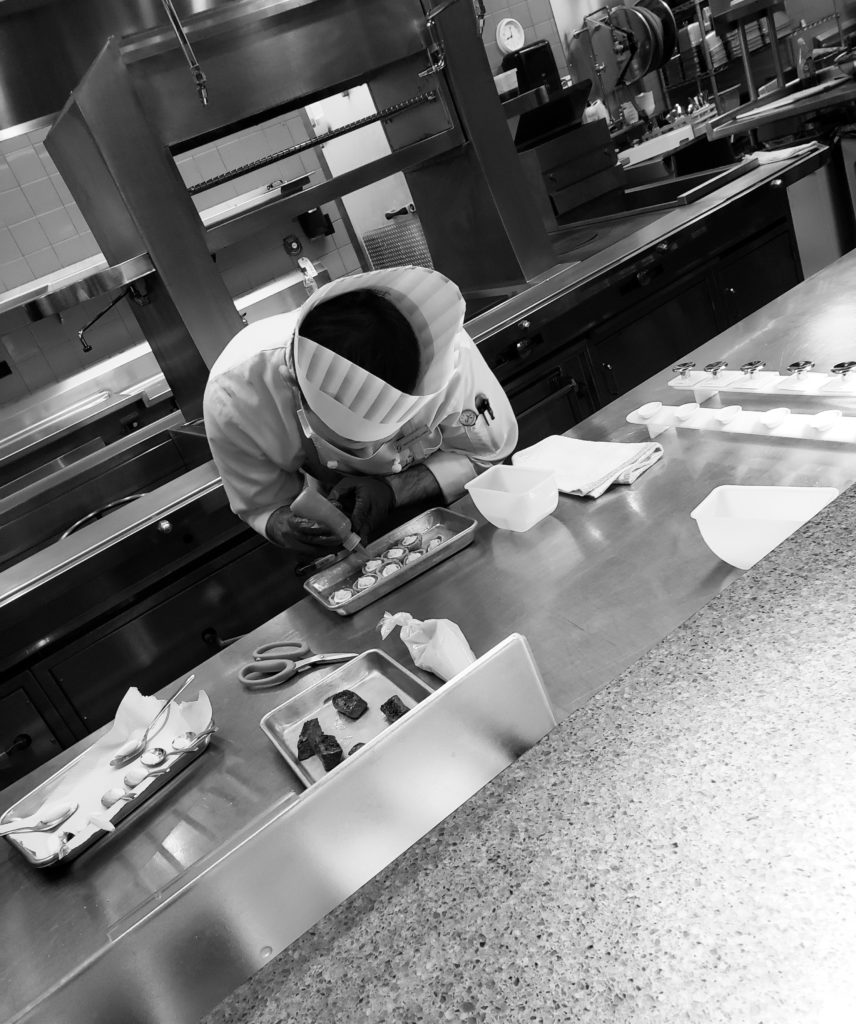
Acing the Basics
“When the New York Yankees warm up, they practice hitting, fielding, throwing and catching,” says Skelding, who was named The Greenbrier’s Executive Chef in 2013. “As a Yankee, you don’t drop a fly ball or miss a grounder. They’ve perfected their fundamentals to the point that they are instinctual.”
The Greenbrier’s apprenticeship program puts a similar focus on fundamentals. “An apprentice has to be a great cook before he or she can become a chef,” says Skelding.
The three-year program teaches apprentices skills through a mix of lectures, demos, practicals, and hands-on rotations in various venues and outlets on the property. The lectures and practicals cover a wide range of topics and occur on a weekly basis.
The savory program starts every year at the end of May, and the pastry component starts in March. The two graduate together in early February.
“A true culinarian will succeed at every station, from garde manger to butchering, and from mopping the floors to washing the dishes,” says Skelding.
In the course of a year, Skelding will get an average of fifty applications. The process starts with an interview and then a 10-hour stage, during which interviewees get face time with all of the current apprentices. This is a critical step.
“I can sit here and talk all day about the program,” says Skelding. “Before, we’d have a lot of dropouts. Now, with the team involved in the interview process, I have only had one.”
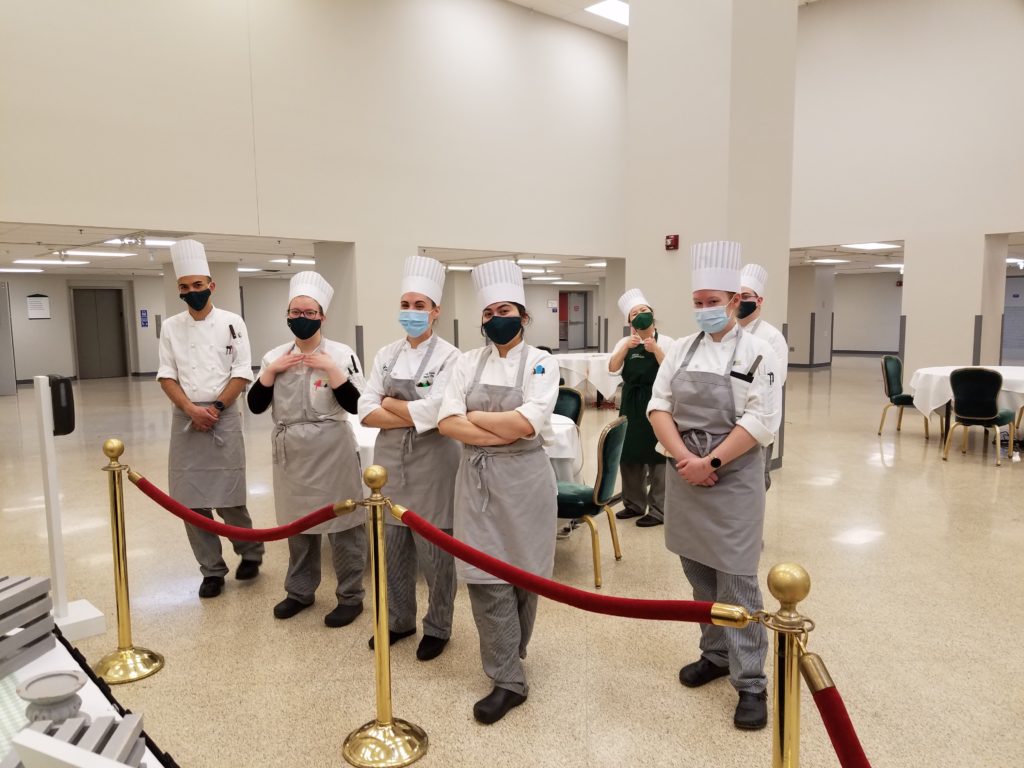
Well-Rounded Graduates
Because of this comprehensive approach, Greenbrier grads evolve quickly, which has become an especially important skill set in the past year.
“Our apprentices aren’t skilled in only one type or genre of foodservice, but all types,” says Skelding. “They work in all areas of the resort and learn different ways to organize themselves, as well as ways to cook. They know a la minute and banquet. They’ve learned butchery and high volume. They are able to adapt because of this structure.”
While the program yields a highly skilled culinarian, a Greenbrier apprenticeship is not for the faint of heart.
“It’s like having two jobs,” says Suteau, who started the pastry component seven years ago. “The apprentice works for eight hours and then he or she must practice all their skills.
“If you don’t practice, you don’t get better,” he adds. “I’m not going to take you by your hand. You have to be self-motivated. This is probably one of the toughest programs in the world because of how demanding it is.
“I tell apprentices when I interview them that it’s going to be rough, physically and mentally, and that there will be frustrating moments,” says Suteau. “But I promise them that at the end of three years, they’ll be a badass pastry chef. They won’t even know how good they are until they leave.”
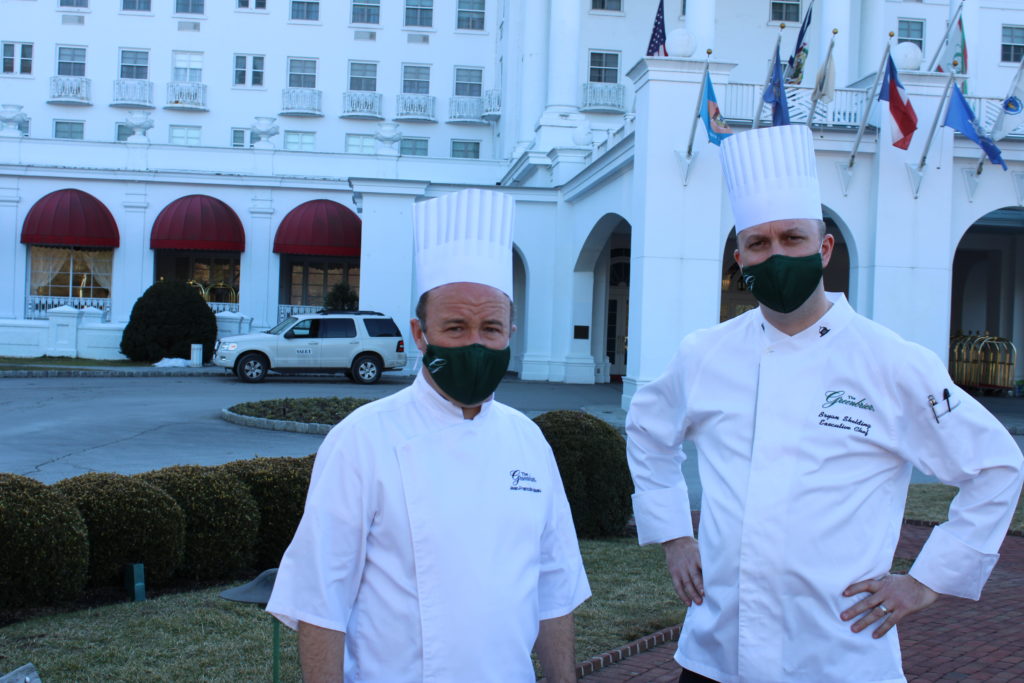
What advice would you give a future apprentice?
“At some point, you’ll want to quit. Take a good look in the mirror and ask your former self, ‘Why did you want to do this in the first place?’ Let that guide you. And if you interview, be prepared to answer that question. Maybe even write the answer to that question on a piece of paper and seal it in an envelope that you can open when you get to that point of wanting to quit. Ask yourself, would you rather be broke, or would you rather be tired?”
—Bryan Skelding, Executive Chef
“Practice. That’s the only way to get better. And don’t give up.”
—Jean-Francois Suteau, Executive Pastry Chef
Becoming the Teacher
Skelding was never formally an apprentice, but he worked with some of the most remarkable chefs The Greenbrier has known, including Harmut Handke, CMC, Peter Timmins, CMC, and Richard Rosendale, CMC.
For the past five years, Skelding has made numerous changes to all of the dining experiences at The Greenbrier while keeping its history and traditions alive. He oversees a culinary team of 200 and stewarding of 75 team members.
In 2016, Skelding, who says his leadership style is firm but fair, made an important change to the apprenticeship program: He stopped teaching them to make food that wasn’t edible.
“The program was originally based on the Culinary Olympics, which is all about displays,” says Skelding. “It was tough, but I want to turn out apprentices who know recipes and flavors and who can become chefs. I think food should have to taste good, not just look good.”
And so, with the help of many, the switch was made.
“I’ve learned that the more I put into it, the more we get out of it,” says Skelding. “That mindset has permeated the whole operation. My apprentices learn from one another and get better as a result. The more we all put into it, the more we’ll all get out of it.”

